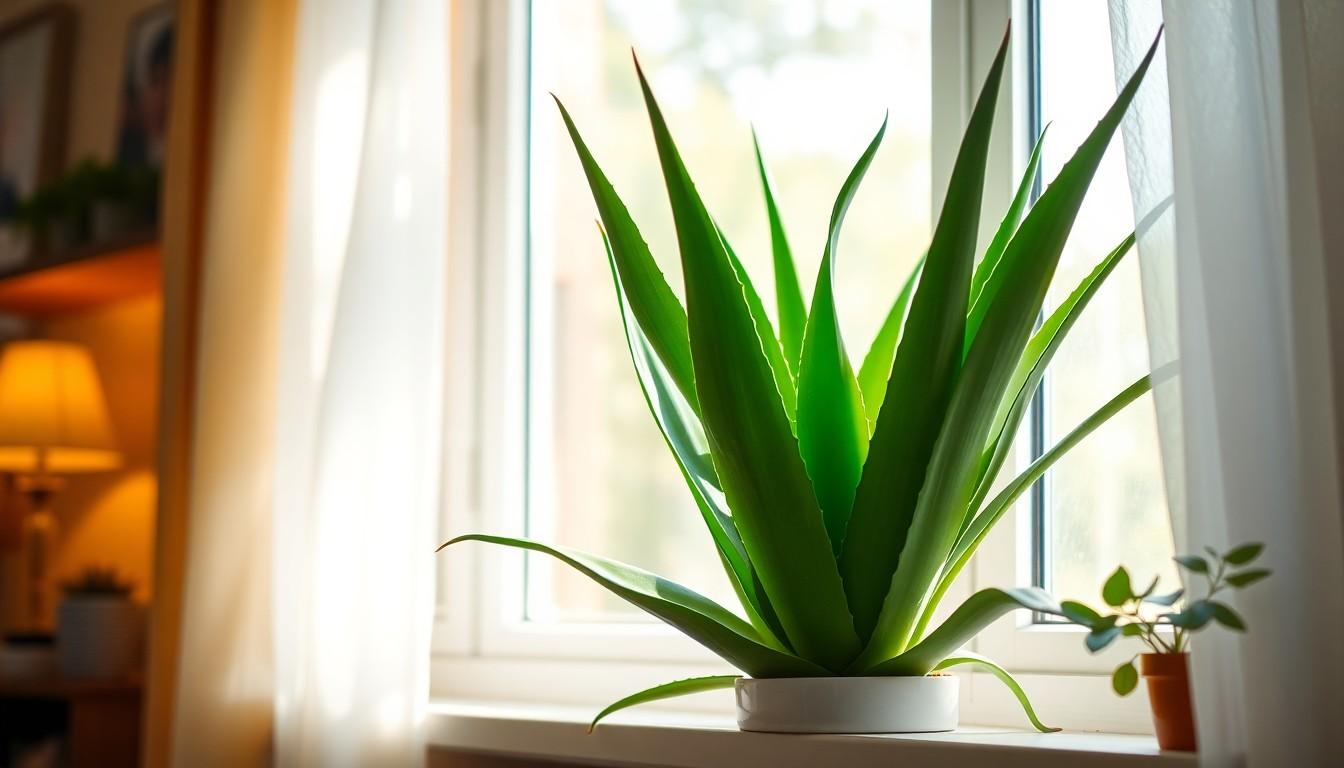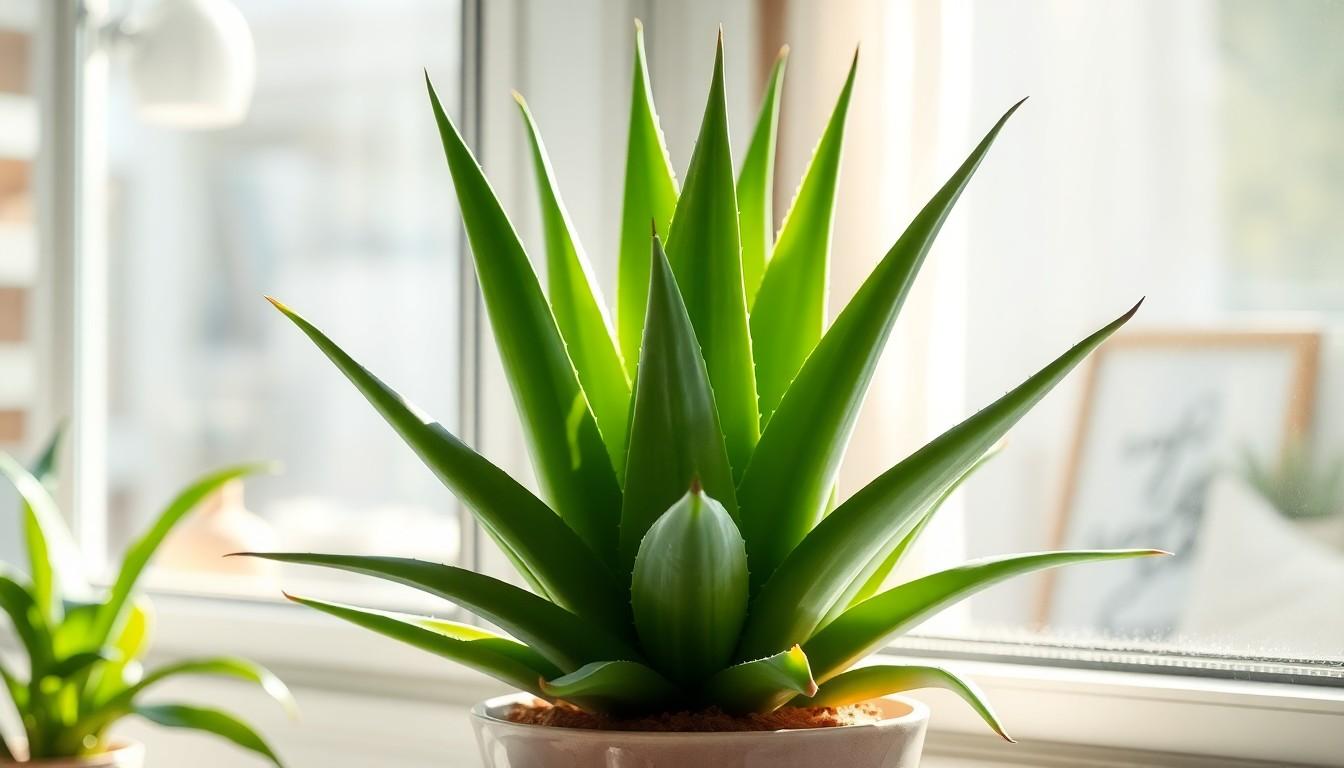Aloe plants are like the cool kids of the
indoor gardening world. With their striking green leaves and low-maintenance attitude, they bring a touch of the wild right into your living room. Plus, they’ve got that whole “I can heal your sunburn” thing going for them, making them the perfect blend of beauty and utility. Who wouldn’t want a houseplant that doubles as a first aid kit?
How to Care for Aloe Plant Indoors
Aloe plants are well-known for their distinctive appearance and easy care requirements. These succulents thrive indoors, adding a touch of greenery to any space.
Common Varieties of Aloe
Several varieties of aloe are popular among indoor gardeners. Aloe vera remains the most recognized type, known for its medicinal properties and thick, fleshy leaves. Another favorite is the Aloe aristata, characterized by its rosette shape and striking white spots. Aloe plicatilis features a unique fan-like appearance, making it visually appealing. The Aloe brevifolia offers a compact size, perfect for small spaces and contributes to diverse indoor plant collections.
Benefits of Growing Aloe Indoors
Growing aloe indoors presents numerous advantages. This plant purifies air, effectively removing pollutants and boosting indoor air quality. Low water requirements make aloe ideal for busy lifestyles, requiring infrequent watering. Additionally, its healing properties provide natural relief for skin irritations and sunburns. Aesthetic appeal enhances home decor, offering both beauty and functionality within living spaces.
Ideal Growing Conditions
Aloe plants thrive in specific conditions that optimize their growth indoors. Understanding these needs ensures healthy plants.
Light Requirements
Aloe plants prefer bright, indirect sunlight. Placing them near a south or west-facing window helps maximize their light exposure. Direct sunlight can scorch their leaves, so filtered light through sheer curtains works well. Observing leaf coloration indicates light levels; healthy, vibrant green leaves signify proper lighting conditions. If leaves become pale or stretched, light levels might be insufficient. Adjusting their position for adequate light enhances growth.
Temperature and Humidity
Aloe plants favor temperatures between 60°F and 75°F. Maintaining these temperatures helps prevent stress and promotes growth. They do not tolerate frost well, making indoor environments ideal during colder months. When humidity levels remain low, these plants adapt easily; they prefer dryer air over excessive moisture. Ensuring good air circulation helps keep aloe healthy, preventing mold and rot. Protecting them from drafty windows or heaters maintains stable conditions for optimal growth.
Watering Guidelines
Regular watering is crucial for maintaining a healthy aloe plant indoors. Understanding specific needs ensures optimal growth.
How Often to Water
Watering every two to three weeks during the growing season suffices. Soak the soil thoroughly until water drains from the bottom. Reduce frequency in winter, as the plant enters dormancy. A general rule to remember: wait for the top inch of soil to dry out before watering again. Adjustments may be necessary depending on the environment, humidity, and pot size.
Signs of Overwatering
Overwatering manifests through several signs. Yellowing leaves often indicate excess moisture. Drooping or mushy leaves can also signal trouble. Root rot becomes a risk if water sits in the pot without drainage. To prevent these issues, assess the soil moisture regularly and use pots with drainage holes. Recognizing these signs early can ensure the aloe plant remains healthy and thrives.
Soil and Potting
Proper soil and potting contribute significantly to the health of aloe plants indoors. Attention to these details ensures optimal growth and vitality.
Best Soil Mix for Aloe
A well-draining soil mix serves as the foundation for thriving aloe plants. Cactus or succulent potting mix works effectively; it allows moisture to escape, preventing root rot. Alternatively, gardeners can create their own mix by combining equal parts potting soil, coarse sand, and perlite. This combination provides the necessary drainage while retaining some moisture. Incorporating inorganic materials, such as pumice, enhances aeration, promoting healthy root development.
Choosing the Right Pot
Selecting the right pot is crucial for aloe plant care. Pots made from terracotta or ceramic are preferred as they absorb excess moisture and promote airflow. The pot must feature drainage holes to prevent water accumulation at the bottom. Sizing impacts root growth; a pot should be slightly larger than the root ball, offering space for expansion without being excessively large. Lastly, consider the pot’s weight; stability helps prevent tipping, especially for top-heavy varieties like Aloe vera.
Fertilization Tips
Caring for aloe plants includes understanding their fertilization needs. Proper fertilization enhances growth and vitality, especially during the active growing season.
When to Fertilize
Fertilization occurs during the growing season, typically from spring to early summer. Applying fertilizer once every four to six weeks supports growth. In winter, aloe plants enter dormancy, making fertilization unnecessary. When the plant shows signs of new growth, that’s an indicator it’s time to resume fertilizing.
Recommended Fertilizers
Utilizing a diluted liquid fertilizer works best for aloe plants. A balanced fertilizer with an NPK ratio of 10-10-10 is recommended. Organic options include fish emulsion or worm castings, which provide nutrients without harsh chemicals. Prioritizing low concentrations prevents potential fertilizer burn. Always follow manufacturer instructions for dosage, ensuring a healthy feeding approach.
Common Pests and Problems
Indoor aloe plants may encounter various pests and issues that affect their growth. Identifying these threats early ensures they remain vibrant and healthy.
Identifying Pests
Common pests affecting aloe plants include aphids, mealybugs, and spider mites. Aphids often cluster on new growth, sucking sap and causing leaves to curl. Mealybugs appear as white, cottony masses on leaves and stems. They’re known for weakening the plant by feeding on its juices. Spider mites create fine webs primarily on the undersides of leaves, causing potential discoloration. Regularly inspecting the plant and observing changes in leaf appearance helps in early detection of infestations.
Solutions for Common Issues
Addressing pests requires prompt action to keep aloe plants flourishing. Applying insecticidal soap effectively eliminates aphids and mealybugs; thorough coverage is crucial for effectiveness. Introducing beneficial insects like ladybugs can naturally reduce pest populations. If spider mites are present, increasing humidity around the plant often deters them. Regularly cleaning the leaves with a damp cloth removes dust and pests, promoting overall health. Monitoring environmental conditions like humidity and light also helps prevent problems before they arise.
Minimal Care for Plants
Caring for aloe plants indoors can be a rewarding experience. With their minimal care requirements and striking appearance, they make an excellent addition to any home. By providing the right light, temperature, and watering regimen, anyone can ensure their aloe thrives.
Regular monitoring for pests and maintaining proper soil drainage will keep these resilient plants healthy. With a little attention, aloe plants not only enhance interior spaces but also offer practical benefits like air purification and natural healing properties. Embracing the beauty and utility of aloe is a smart choice for both novice and seasoned plant lovers alike.



